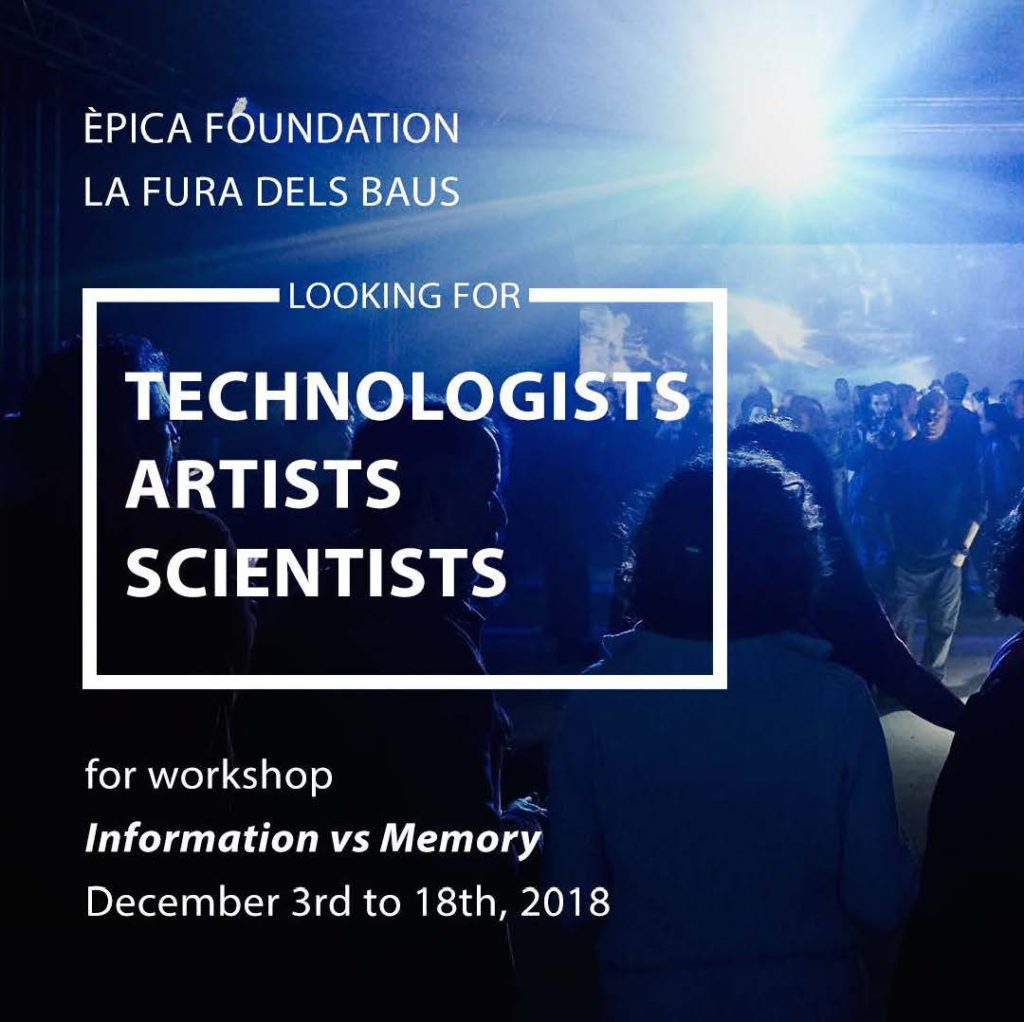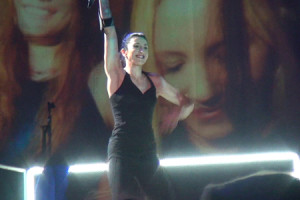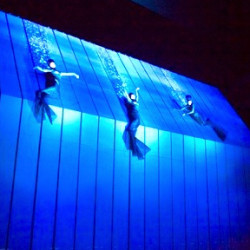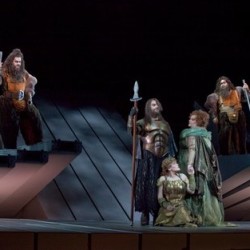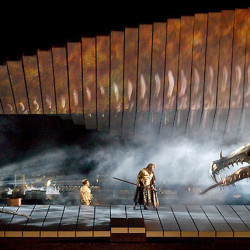Pubblicato su Interactive Performance e su Carte Sensibili e in A.M. Monteverdi, Rimediando il teatro con le ombre, con le macchine, con i new media, La Spezia, Ed. Giacché, 2012.
Chi visita il sito ufficiale di Ex Machina, la struttura di Robert Lepage con quartier generale a Québec City, fa fatica a crederci. Il numero di allestimenti e produzioni (concerti, spettacoli di prosa e d’opera, installazioni luminose, proiezioni videoarchitettoniche, pubblicazioni fotografiche d’arte) che la R. L. inc. firma annualmente è impressionante, come impressionante è il numero di spettacoli in tournée contemporaneamente in tutto il mondo da anni, cosa assolutamente impensabile per qualunque produzione italiana.
La Face Cachée de la Lune (che ha debuttato nel 2001) è di ritorno da un tour in Grecia, Andersen Project (realizzato nel 2005) è stato negli States nel 2012, Le Dragon Bleu è ora in Canada, Eonnagata in Giappone, The Nightingale and Other Short Fables in Olanda, Lypsinch in Australia, mentre New York ha chiuso l’anno 2011 con Il crepuscolo degli dei a firma di Lepage al Metropolitan.
Nel giro di pochi anni Lepage ha firmato uno spettacolo di ispirazione shakesperiana (The Tempest), interpretato da nativi in esclusiva per una regione del Canada, il Wendake; una gigantesca proiezione videoarchitettonica sui silos del porto di Québec City per i 400 anni della fondazione della città (The Image Mill) e due scenografie per il Cirque du Soleil (compagnia internazionale di nuovo circo con base a Montréal, fondata nel 1984 da Guy Lalibertè e Daniel Gauthier). Si tratta di Totem (2010, set designer Carl Fillion) e Ka (2005, spettacolo stabile al MGM Theatre di Las Vegas; set designer Mark Fischer, l’architetto che ha firmato anche i concerti dei Pink Floyd e degli U2; una scheda completa suWikipedia).
Ma la vera fatica titanica lo ha visto impegnato, a partire dal 2008, nella regia dell’intera tetralogia wagneriana per il Metropolitan di New York diretto dal maestro James Levine. Il ciclo dell’Anello dei Nibelunghi è stato inaugurato la scorsa stagione con Das Rheingold e Die Walküre, è proseguito con Siegfried nell’ottobre 2011 e si è concluderà nel gennaio 2012 con Die Götterdämmerung; l’intero ciclo verrà riproposto al MET nella sua interezza tra il 25 aprile e il 2 maggio 2012. Ogni produzione di Lepage è un evento accolto con enorme entusiasmo dal pubblico (ma non sempre con eguale entusiasmo dalla critica), a cui seguono girandole di premi, riconoscimenti prestigiosi che a loro volta attirano nuove commissioni milionarie. Anche il MIT di Boston lo ha recentemente insignito di un premio, l’Eugene McDermott Award in the Arts.
E’ passato molto tempo dall’epoca in cui, per finanziare i suoi primi film negli anni Novanta, come ricordava in un’intervista, era irritato alla sola idea di andare a chiedere finanziamenti per i suoi progetti artistici, a un “civil servant“. Oggi sono le grandi Fondazioni, i teatri internazionali a contenderselo a suon di milioni di dollari.
L’opera: a great meaning place
Nonostante il notevole cambio di scala rispetto ai palcoscenici e al pubblico degli inizi, la coerenza artistica di Lepage è degna di nota. Il regista e interprete quebecchese trasporta temi, motivi e idee del teatro di ricerca in territori a esso insoliti: negli stadi per i megaconcerti pop o nelle opera houseper i classici della musica lirica, veicolando in spettacoli per il grande pubblico la profondità narrativa, la visionarietà immaginifica e l’ingegno tecnico che caratterizza i suoi spettacoli teatrali. Le sue scene impongono anche un certo impegno acrobatico agli attori/ballerini/cantanti: la struttura metallica ideata per il Growing Up Tour, che si staccava da terra per salire verso l’alto, obbligava Peter Gabriel a cantare a testa in giù; in Ka gli artisti precipitano dall’alto di una piattaforma; nel ciclo wagneriano i cantanti cavalcano imponenti quanto virtuali cavalli, in bilico su una struttura alta otto metri.Nella piattaforma ideata per la tetralogia di Wagner è il movimento stesso della macchina scenica (insieme con le luci e le proiezioni) a creare una drammaturgia e un interessante dialogo con l’attore: alzandosi verticalmente, disponendosi perpendicolarmente essa evoca molteplici “luoghi”: montagne altissime, profondità marine, campi di battaglia. Quando si attraversano altri territori dell’arte la qualità della ricerca teatrale non si disperde, ma si estende ai diversi luoghi dello spettacolo, modificandone le convenzioni:
“I’ve worked a lot with Peter Gabriel; his music isn’t operatic, but he creates big, popular gatherings to which architecture, dance and music are all invited. Opera needs a major makeover; the large opera houses are too in thrall to their conservative patrons. Opera should be a place for art forms to meet. It includes music, litterature, architecture, set designing, fine arts, choreography. Opera is a great meaning place.”
E’ proprio nell’ambito dell’opera che Lepage si è cimentato per la prima volta con la sua sperimentazione scenica più ardita, un’architettura in grado di accogliere immagini 3D ed effettistica cinematografica: l’ha utilizzata nella regia de La Damnation de Faust da Berlioz nel 1998 (rimasto in repertorio all’Opera di Parigi dal 2000 al 2005).
Per la regia del ciclo wagneriano, Lepage ha chiamato a collaborare, oltre al solito Fillion, anche i collaboratori tecnici, artisti, videomaker, i creatori di effetti visivi, persino i produttori esecutivi del Cirque du Soleil, forse gli unici in grado di garantire un allestimento all’altezza di un teatro dalla fama colossale come il Metropolitan di New York.
Anche Josef Svoboda disegnò le scene della tetralogia di Wagner Der Ring des Nibelungen, e addirittura per tre volte: al Covent Garden a Londra (1974-76), al Grand Théâtre di Ginevra (1975-77) e al Théâtre Antique d’Orange, in Francia (1988). La versione londinese, in cui lo scenografo cecoslovacco utilizzò il laser, è quella più vicina alla ipertecnologica versione di Lepage. E tra Svoboda e Lepage non bisogna dimenticare la versione “techno” dell’Anello dei Nibelunghi a firma della Fura dels Baus.
Nella versione del 2008 de L’anello dei Nibelunghi per il Metropolitan di New York diretto dal maestro James Levine, Lepage vi aggiungerà anche un sistema di motion capture che cattura i movimenti dei cantanti e integra attori e immagini in una scena dall’aspetto di un enorme videowall. Un modo, come lui stesso racconta, per “tentare di illustrare l’energia della musica di Berlioz, estenderla non decorarla“. La tecnologia amplifica l’energia della musica perché:
“The survival of the art of theatre depends on its capacity to reinvent itself by embracing new tools and new languages. In a way, innovators in both arts and sciences walk on parallel paths: they have to keep their minds constantly open to new possibilities as their imagination is the best instrument to expand the limits of their fields.”
E’ impossibile dissociare Lepage dal suo giovane e altrettanto geniale stage designer Carl Fillion, con il quale crea da sempre quelle macchine sceniche per le quali è universalmente acclamato. Con lui ha dato vita al mondo d’ombre viventi e video di The seven streams of the river Ota, al dispositivo roteante di Elsinore, il marchingegno per il suo più folle progetto di one-man-show; ai pannelli scorrevoli, specchianti e proiettabili di La face cachée de la lune. E’ Carl Fillion a spiegare il segreto con cui egli trasforma un’unica scena, da un’idea iniziale discussa insieme con Lepage, in un vortice infinito di luoghi:
I like to transform the scenic environment by creating elements that move and turn, on stage, in full view of the audience. My main visual signature as a designer can be found in the way I sculpt the space and keep it in motion.
Per la regia del ciclo wagneriano, Lepage chiamerà ancora Fillion e si trascinerà dietro proprio i collaboratori tecnici, artisti, videomaker, i creatori di effetti visivi, persino i produttori esecutivi del Cirque du soleil, forse gli unici in grado di garantire un allestimento all’altezza di un teatro dalla fama colossale come il Metropolitan Square Garden di New York.
Per l’atmosfera del
Crepuscolo degli dei la scena si libera di ingombranti oggetti per ospitare un unico monstrum leonardesco che sembra uscito dalle mani di un alchimista d’altri tempi, un erede naturale della fantasia avanguardista di Svoboda. La flessibilità e la trasformabilità, come in tutte le scenografie di Lepage, sono le caratteristiche primarie di questa
Walhalla Machine e respirano insieme con l’attore che le sovrasta. Nel corso dell’intervista contentuta in
Wagner’s Dream, lo stesso Lepage rivela che l’idea della macchina che contiene tutti gli ambienti gli è venuta in mente pensando all’Islanda, alla sua formazione vulcanica e tettonica, alle sue crepe e solchi dovuti alla lava, agli avallamenti e insieme alle enormi montagne, concentrati tutte in uno stesso paesaggio, tra ghiaccio e fuoco. Ancora una volta, come già accadeva in
Elsinore, anche se in scala decisamente più ridotta, e poi anche con
Ka, il gigantesco dispositivo progettato per il Cirque du Soleil in cui l’attore recita mentre tutto è in movimento, la macchina ha una conduzione “manuale”. La tecnologia precede: inventa, dispone, prepara, ma a guidarla è la mano dell’uomo. Ecco allora il protagonista incontrastato della scena, l’enorme macchina progettata da Fillion per l’intera tetralogia, vera opera di ingegneria meccanica, fatta di 45 assi di 9 metri di fibra di vetro ricoperta di alluminio, mobili autonomamente l’uno dall’altro e che si sollevano e ruotano a 360° grazie a un complesso sistema idraulico che permette un gran numero di forme differenti, diventando la spina di un dragone, una montagna o il
cavallo delle ValchirieGli attori-cantanti, spesso meno agili e longilinei degli atleti del Cirque du Soleil, sono collocati sopra la struttura in posizioni davvero difficili: in alto, in bilico, scivolando sulle assi, arrampicandosi. I cantanti hanno anche dei “doppi” in veste di acrobati, che li doppiano nei movimenti troppo complessi.
La prima scena del Rheingold, con la famosissima ouverture con l’arpeggio in miB (che introduce il leitmotiv dello scorrere del fiume, delle onde, in un crescendo di strumenti), è il preludio alla scena delle Ondine, le figlie del Reno custodi dell’oro del loro padre. Questa scena ha sempre destato molte preoccupazioni per i registi, a causa della difficoltà di immaginare una scena che si svolge sott’acqua. In alcuni casi l’acqua è realmente presente in teche trasparenti in cui le Ondine sono sommerse (come nella versione della Fura dels Baus), ma di solito per simulare le onde vengono utilizzate stoffe azzurre, facilmente eliminabili dalla scena (come nella regia di Marininski per il Covent).
Lepage immagina tre sirene che scivolano in questo azzurro elettronico, con leggerezza, calandosi dalla macchina, nuotando o lasciandosi andare a corpo libero con il solo aiuto di una fune; intorno a loro una proiezione piccole pietre di mare e bollicine. Lepage spiega che:
“What happens in Das Rheingold is that we’re in a world of mists and lightning, and fire and water, an elemental realm. That’s why the set is morphing into these elements that remind us of rocks and spines. As we move on, and the Ring tells the story of demigods and human being and eventually of society, and social classes and ranks, the set slowly moves toward architectural propositions.”
L’inclinazione dei piani si presta a un gioco di voli di scale che fa ricordare i disegni di Adolphe Appia per Wagner.
I movimenti dell’architettura di scena (costruita da
Scène Éthique di Montréal) avvengono con intervalli da 5 o 10 minuti e sono controllati in parte a mano in parte da un computer. Un’uso – pare – strabiliante e fortemente realistico del 3D senza visori da parte del pubblico, è stato creato per le scene della foresta in
Siegfried. Qua l’
animazione con i movimenti possibili della macchina.
Così Lepage:
“It was important that we create a theatre machine that would be similarly versatile—a set that had its own life and could actually go through different metamorphoses but, at the same time feel very organic. Very early on, we decided to create a spine to the set that allows us to move things and articulate things. So the set is actually not only illustrating some of the ideas in the Ring, but it’s also literally supporting the characters and the ideas…it was important for us that the set be very nimble, very flexible, very adaptable, and alive, so that it not only moves, but it also breathes”.
Sulla superficie di questi assi che somigliano a tasti di un gigantesco pianoforte e che nei movimenti ricordano un po’ i mostri fantasy di Dune, vengono proiettate immagini in videomapping, a mostrare alberi della foresta, caverne, le acque del Reno. Sono state usate sia immagini statiche che immagini interattive, quest’ultime ottenute grazie a un sistema di motion tracking da telecamere.
Réalisations con Maginaire inc., hanno realizzato gli effetti video 3D e interattivi gestiti dal software Sensei.
La macchina scenica complessiva è di tali proporzioni e di tale pesantezza (45 tonnellate) che il Metropolitan ha fatto sapere di aver rinforzato il palcoscenico. I giornali hanno parlato di “un’affascinante combinazione di complessa tecnologia e semplicità estetica”, “traditionale e rivoluzionario” ma anche di una produzione “troppo simile a un musical di Broadway” mentre il N.Y. T. va giù ancora più pesante e titola la recensione: Ring V/s Spider man.
Produzione dunque, che rimarrà negli annali anche per l’impiego di una tecnologia avanzatissima e per il numero straordinariamente alto di tecnici e progettisti, e di conseguenza, per essere forse uno dei più costosi allestimenti teatrali di tutti i tempi (si parla di sedici milioni di dollari). Cosa che non sembra aver preoccupato molto Peter Gelb, general manager del Metropolitan dal momento che ha venduto l’esclusiva della diretta HD ai teatri e ai cinema di quaranta Paesi. Per Lepage, dunque, un sold out esteso a tutti i media del pianeta.
Per chi non ha potuto vederlo dal vivo al MET può comunque vedere lo spettacolo in video grazie al cofanetto di 5 dvd appena messi in distribuzione per la Deutsche Grammaphone. Il costo non è per tutti, ma è sempre minore del biglietto per lo spettacolo teatrale (che arrivava fino ad alcune migliaia di euro). Nel cofanetto i 4 dvd corrispondono alle quattro opere (pur legate in un unicum come voleva Wagner, dalla storia, la saga germanica dei Nibelunghi) ovvero Das Rheingold, Die Walküre, Sigfried,Gotterdämmerung. Il quinto dvd è il documentario Wagner’s Dream”: più che raccontare il processo creativo, mostra il dietro le quinte (o meglio, in questo caso, il “sotto le quinte”) della mostruosa macchina tecnologica progettata dal mago delle scene di Lepage, Robert Fillion.


